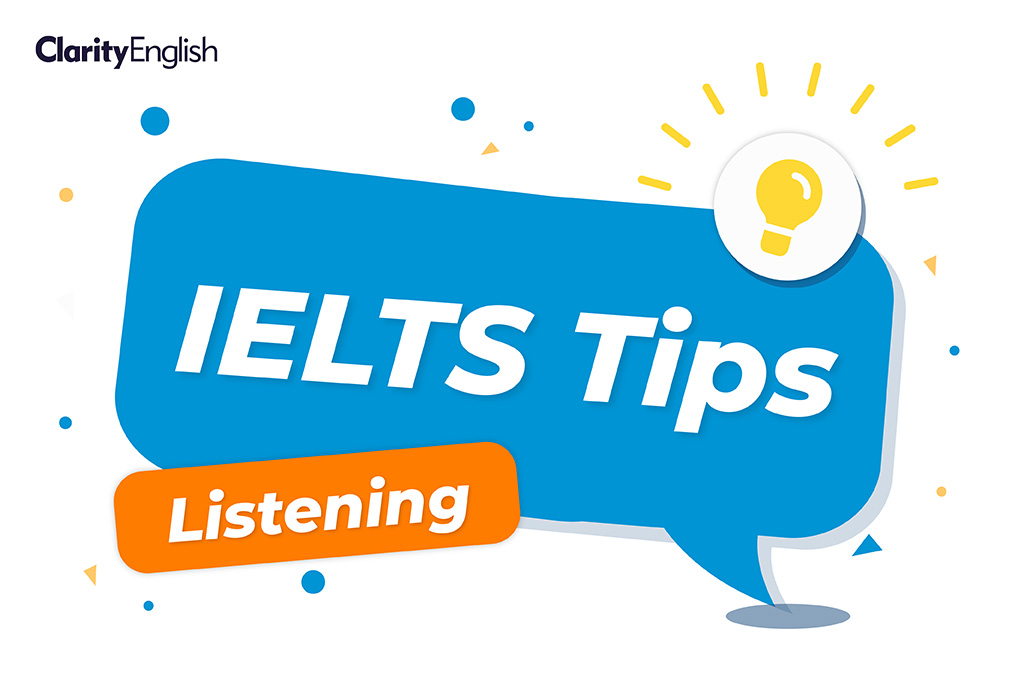In the first post of this series (on Reading) I explained how a whole range of experts – teachers, authors, editors, tutors, British Council managers – sent us insights into how best to prepare for the IELTS test. These were for an IELTS Tips app project that for various reasons was discontinued. But that doesn’t diminish the value of the advice. Here then, are the four most useful insights for candidates preparing for IELTS Listening.
1. How to predict an answer
MM, IELTS teacher, Brazil
In the IELTS Listening test you only hear the recording once. So what can you do to make sure you don’t miss important information? For each part of the test, there is time for you to look through the questions before the recording starts. Use this time to predict what you will hear. For example, look at this (real) question from a dialogue about a railway journey, where you have to fill this gap:
(1) Express train leaves at ………..
What should you do?
– Analyse what kind of information you are listening for. In this case, it’s clearly a time.
– Highlight the key word leaves and think of similar words, like departs, departure time, or the train goes at… Write them on the question paper. Then listen for any of the words you have written down.
– Once you have written down the answer (e.g. ten past eleven), stay focused on the recording to check if the speaker corrects themself.
2. Watch out for distractors
BD, IELTS Programme Manager, China
The tip above talks about the speaker correcting themself. What does this mean? Read this extract from an IELTS Listening test dialogue:
Speaker A: ‘Your reservation is for Wednesday the 25th of September, sir.’
Speaker B: ‘Wednesday the 25th? But Wednesday is the 24th.’
Speaker A: ‘Ah, yes. That’s my mistake. Your reservation is for Thursday the 25th of September.’
A common IELTS Listening test feature is the distractor. Distractors are designed to make sure that you can listen and process information accurately. Speakers will often double back, change what they say, or correct themselves to try to confuse you. Listen carefully and don’t assume that the first thing you hear will always be the correct answer. Read more about distractors here.
3. Understanding the accent
KS, IELTS teacher, Oman
IELTS is an international test, so you might hear Australian, British, New Zealand or North American accents. These will include northern and southern British accents, and accents from the north and south of the US and from Canada. You may also hear voices from South Africa. That’s quite a range! It’s sensible to spend some time listening to these different accents when you are preparing for the test — and it’s not difficult to find radio stations online. Start on this page of Radioline, a website that provides links to radio stations all over the world. (Warning: it’s quite addictive!)
Or you could listen to some TED talks — speakers come from many different countries, and often the talks have transcripts, so you can check the accuracy of your listening. Try this TED Talk activity that can help your IELTS Listening.
4. Learn how to spell in English
AS, IELTS author, UK
In the IELTS Listening test, you may have the answer spelled out for you. For example, one of the speakers might spell their name, and you have to copy it down. It might be a dialogue like this:
Speaker 1: And your name please, for the delivery form?
Speaker 2: It’s McDougal.
Speaker 1: McDougal? Can you spell that for me please?
Speaker 2: Sure. M-C-D-O-U-G-A-L.
Speaker 1: OK, thank you Ms McDougal…
This can present a number of challenges if you are not used to listening to words being spelled out in English:
– Some English letters sound similar to each other: m and n, for example, are very similar so you have to listen carefully.
– Some English letters sound like different letters in other languages. For instance, j in English sounds like g in French.
– Two English letters may simply sound the same in your language. A Spanish speaker might find it difficult to tell the difference between b and v.
This video takes you through all the letters of the alphabet as they are pronounced in English. At about 1 minute, minimise the video, and as words are spelled out write them down to test yourself.
Finally:
Watch this really useful British Council video on IELTS Listening. (But note that it doesn’t cover IELTS on computer.)
Why not download this handy fact sheet on IELTS Listening?

